How To Install Fish Finder on Aluminum Boat 2024
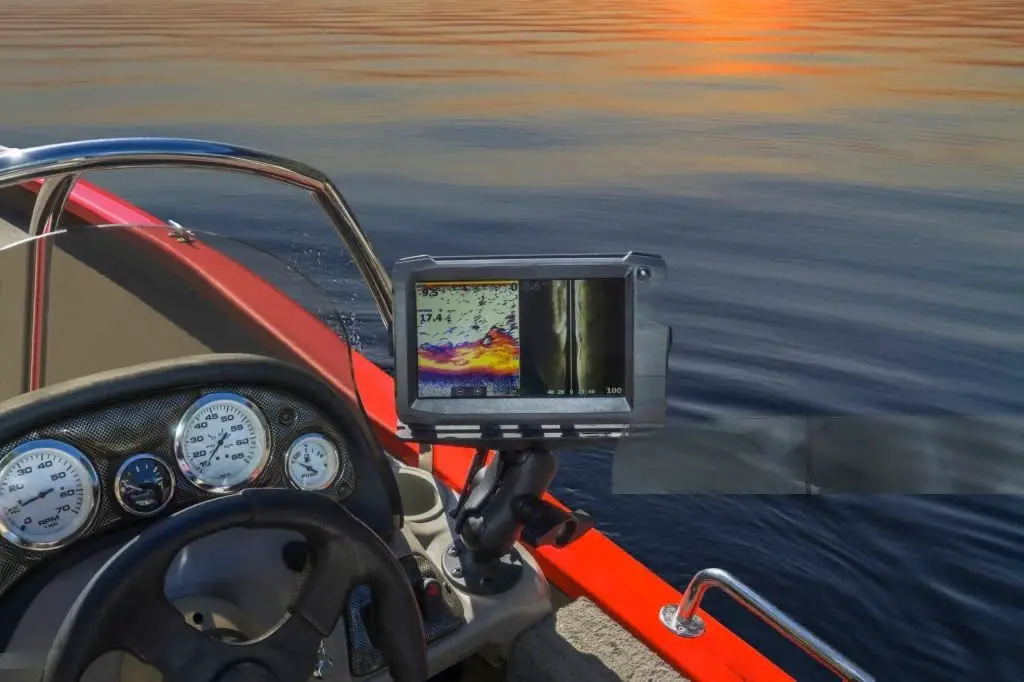
Fishing is a beloved hobby that blends serenity with the joys of the trap. However, the undertaking of finding first-class fishing spots can, every so often, hose down the revel. This is where Fishfinder can remodel your fishing adventures.
A fish finder is a sophisticated virtual tool that employs sonar era to stumble on underwater structures, depth adjustments, and, most importantly, fish. By supplying actual-time insights into the underwater world, a fish finder allows anglers to make informed decisions, leading more efficient fishing journeys.
Using a fish finder on an aluminum boat comes with specific benefits. Aluminum boats are favored for their light-weight construct, durability, and simplicity of maneuverability. When paired with a fishfinder, boats end up with even more powerful fishing systems.
The fish finder’s capability to provide correct underwater readings enhances the nimbleness of an aluminum boat, permitting anglers to quickly discover and reap high-quality fishing spots. Additionally, the compatibility of aluminum boats with numerous mounting alternatives makes the set-up method honest and adaptable to particular fishing patterns.
We can help you install a fish finder on an aluminum boat by walking you through the steps in this blog post. From choosing the best fish finder for your needs to guiding you through the detailed configuration of the transducer and display device, we will cover it all.
You can install your fishfinder properly and start enjoying its benefits on your next fishing trip with the help of our thorough handbook. This guide will improve your fishing experience with contemporary fish-finding technology, regardless of your expertise level.
What are some popular fish finder brands?
There are a few brands of fishfinders that are prominent with the aid of their superiority and creativity. The following 3 main manufacturers of fishfinders can be of interest to you:
Garmin: Known for his or her advanced functions, Garmin fishfinders provide high-resolution displays, detailed mapping talents, and actual-time sonar comments. The Garmin GPSMAP 8616 is a pinnacle select for its rapid, clear display and superior functionality.
Lowrance: Lowrance fishfinders are popular for their reliability and flexibility. The Lowrance HDS PRO 10 is excellent for down imaging, while the Lowrance Elite FS 9 gives awesome performance without breaking the bank.
Humminbird: Humminbird fish finders excel in facet imaging and CHIRP sonar generation. The Humminbird HELIX 12 MSI+ GPS G4N is a pinnacle choice for aspect imaging, and the Humminbird HELIX 15 Chirp Mega SI+ gives dazzling features below $3,0001.
Remember, each logo has an extensive variety of models, so discover their services to locate the one that best fits your fishing needs!
How To Install Fish Finder on Aluminum Boat 2024: A Comprehensive Guide
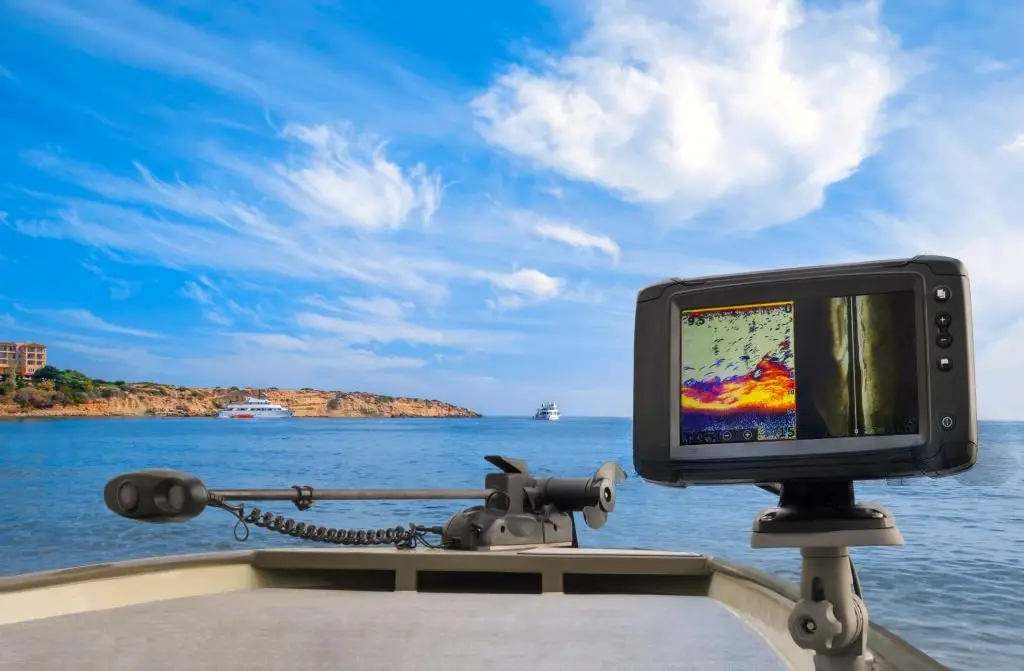
There are multiple procedures involved in installing a fish finder on an aluminum boat in order to guarantee correct positioning and operation.
Here’s a trendy guide to help you with the installation
Choose the location: Decide in which you need to region the transducer and the fish finder display. The transducer must be positioned within the water, typically on the transom, even though you need the transducer within reach of the fish finder display. The display must have a clear view of the helm.
Mount the transducer
1. If you’re using a transom mount, choose a niche on the transom in which the transducer may have an unobstructed view of the water.
2. Use a template (if provided) to mark the drill holes.
3. Drill the holes, apply marine sealant to prevent leaks, and attach the transducer bracket to the transom.
Route the Cables: Run the transducer cable from the transom to the fish finder show, warding off regions that can pinch or harm the cable.
Install the Fish Finder Display: Mount the show unit at the dashboard or some other handy area. Ensure it’s secure and solid.
Connect to Power: Wire the fish finder to a power supply, generally the boat’s battery. Use a fuse or circuit breaker as endorsed with the aid of the manufacturer.
Test the setup. Turn on the fish finder to ensure it powers up and the transducer is sending and receiving indicators correctly.
Understanding Fish Finders
How Fish Finders Work
Fish finders perform using sonar, which stands for sound navigation and ranging. These devices emit sound waves from a transducer, which is installed on the boat. When those sound waves hit an object, which includes the finder, then the lowest part reflects those echoes and shreds on a display, showing you the depth and location of underwater structures and fish.
A fish, or the lowest of the lake, gets better at the transducer. The fish fknowingen interprets those echoes and shows them on a display, showing you the depth and beauty of underwater structures and fish. Knowing how sonar works, we will use fish finders to pinpoint the nice fishing spots and better recognize the underwater surroundings.
Types of Fish Finders
When choosing a fish finder for an aluminum boat, it’s important to recognize the different sorts to be had:
Portable Fish Finders: These are perfect for anglers who use a couple of boats or need a device for effortless delivery. Portable fish finders are battery-operated and include suction cup transducers that may be attached to various surfaces.
Fixed Fish Finders: These are permanently set up on the boat and provide greater stability and frequently better performance. They are connected to the boat’s power supply and usually have larger screens and more advanced functions.
GPS-Enabled Fish Finders: These integrate conventional fish-finding skills with GPS navigation. They allow us to mark waypoints, navigate to particular fishing spots, and track our movements on the water, making them especially useful for serious anglers.
Key Features to Look For
When deciding on a fish finder for your aluminum boat, do not forget the following key functions:
Transducer Type: The transducer is vital for accurate readings. We have to search for one that is well matched with aluminum boats and offers clear sonar pictures. Dual-frequency transducers offer better overall performance in both shallow and deep waters.
Display Quality: A clear, clean-to-read show is critical. High-decision screens with properibility in shinbrightlight will enhance our capacity to interpret sonar facts.
Power and Frequency: Higher energy and frequency settings result in greater specified images and better intensity penetration. We need to pick out a fishfinder that fits the standard fishing situations we stumble upon.
GPS and Mapping: If we regularly fish in unexpected waters, a GPS-enabled fish finder with specified maps can be useful. This feature helps us navigate and mark effective fishing spots.
Easy Installation and Use: We have to opt for a fish finder that is simple to put in and person-friendly. Models with intuitive interfaces and comprehensive manuals will save us time and frustration at some stage in setup and use.
By knowing how fish finders work and what capabilities to search for, we are able to choose the first-rate tool for our aluminum boat, improving our fishing revel in and increasing our probabilities of a hit capture.
Preparing for set-up
Tools and Materials Needed
Before we start the installation of our fish finder on an aluminum boat, it’s crucial to accumulate all the necessary equipment and substances. Having the entire system equipped will make the method smoother and extra green.
List of Tools
Drill: for making holes to mount the transducer and display unit.
Screwdrivers, both flathead and Phillips, for securing screws.
Wrench: for tightening bolts and nuts.
Mounting Bracket: To maintain the fishfinder display unit in the area.
Wiring Kit: Including cord connectors, electrical tape, and zip ties for dealing with cables.
Measuring Tape: To ensure the particular placement of the transducer and display unit.
Pencil or marker: for marking drill factors and mounting places.
Level: To make certain the transducer is hooked up horizontally.
Materials Needed
Fish Finder Unit: The predominant show and manipulate unit.
Transducer: The tool that sends and receives sonar alerts.
Mounting Hardware: screws, bolts, and brackets are essential for setup.
Sealant: marine-grade sealant to prevent water ingress around drilled holes.
Battery or Power Source: If you are not using the boat’s present electricity machine, a separate battery can be needed.
Cable Extensions: Depending on the distance between the transducer and the display unit, extension cables are probably required.
Safety Precautions
Safety is paramount for the duration of the setup method. Here are some key protection gear and practices to observe:
Safety Gear
Wear gloves to shield your hands from gear and jagged surfaces.
Wear safety glasses when drilling to guard your eyes from flying particles.
Hearing Protection: Use ear protection in case you’re sensitive to the noise from drilling.
Safety Practices
Disconnect Power: Ensure the boat’s power supply is disconnected before starting the installation to keep away from electric shocks.
Stable Work Area: Ensure the boat is on a stable surface or securely docked to save your movement while running.
Use Proper Tools: Always use the appropriate device for every venture to avoid accidents and ensure a steady installation.
Mark Drill Points: Carefully measure and mark the area where you will drill to keep away from unnecessary holes and potential harm to the boat.
Check for Obstructions: Before drilling, make sure there are no obstructions in the back of the place you are operating directly to avoid damaging inner wiring or different components.
Clean Work Area: Keep the painting region tidy to keep it from tripping or losing small components in the course of installation.
By preparing appropriately and following those protection precautions, we are able to make sure an easy and safe installation manner for our fishfinder, putting the level for a hit and fun fishing revel in.
Step-by-Step Installation Guide
Step 1: Choosing the Location
Selecting the gold standard for the fish finder and transducer is critical for reaching clear sonar readings and ensuring ease of use. Here’s a way to do it:
Fish Finder Display Unit Location
- Accessibility: The show unit ought to be positioned so that it is effortlessly handy while running the boat. This is commonly done by mounting it on or near the console or dashboard.
2. Visibility: Ensure the screen is visible in your usual fishing role and in various lighting fixture situations. Avoid setting it in direct sunlight to reduce glare.
3. Interference-Free Area: The location needs to be unobstructed from interference resulting from other digital devices. Ensure there are not any huge metallic gadgets nearby that could disrupt the signal.
4. Mounting Surface: Choose a flat, solid surface that may aid the weight of the display unit and mounting bracket. The location ought to additionally permit the routing of cables without obstruction.
Transducer Location
- Transom Mounting: For many aluminum boats, mounting the transducer on the transom (the flat part behind the boat) is good. This vicinity gives a clean path for the sonar indicators without obstruction.
2. Water Flow: The transducer has to be placed in an area with easy water glide when the boat is moving. This facilitates keeping correct readings. Avoid regions with turbulence or bubbles, which include those near the outboard motor.
3. Depth: The transducer must be set up as little as possible at the transom, under the waterline, but no longer so low that it risks being damaged by particles in shallow waters.
4. Centerline: Position the transducer as close to the centerline of the boat as possible to ensure balanced and correct readings.
Considerations for Clear Sonar Readings and Easy Visibility
- Cable Length: Ensure the cables from the transducer to the show unit can be achieved simply without being stretched or pinched. Plan the cable course to keep away from sharp bends and capability damage factors.
2. Interference Minimization: Keep transducer cables far away from other electric wiring to limit interference. Use zip-ties to secure cables and save movement.
3. Angle Adjustment: Most transducers include adjustable mounts. Ensure the transducer is angled efficiently, parallel to the water floor, to provide high-quality sonar readings. You might need to alter it just after checking out.
4. Testing Location: Before completely solving the transducer, quickly area it in the chosen region and check it. This helps make sure that you are getting clean readings and can make modifications if necessary.
By carefully choosing and checking out the places for both the fish finder show unit and the transducer, we will ensure premier performance and an unbroken fishing revel in.
Testing and calibration
Powering On and Initial Setup
- Turning on the Fish Finder: Connect the fish finder to strength and flip it on using the designated energy button. The tool will initialize and display the home display or setup menu.
- Navigating the Setup Menu: Use the menu buttons or touchscreen (if ready) to navigate through the initial setup. Set possibilities together with language, units (imperial/metric), and time/date settings in keeping with your desire and location.
3. Configuring Settings
Depth Range: Adjust the depth range to match the typical water depths you fish in. This guarantees that you can see each shallow and deep area honestly.
Frequency: Select the sonar frequency primarily based on your fishing surroundings. Higher frequencies (e.g., 200 kHz) provide higher detail in shallow water, while lower frequencies (e.g., 50 kHz) penetrate deeper but with much less element.
Display Preferences: Customize the show settings, which include brightness, shade scheme, and break-up-screen perspectives, for the finest visibility in distinctive lighting situations.
Testing the Transducer
- Conducting a Test Run: Lower your boat into the water and power at the fish finder. Navigate to a place with known underwater systems or fish pastimes.
- Checking Transducer Operation: Observe the display for actual-time sonar readings. Look for clear snap shots of underwater structures, fish arches, and bottom contours. Ensure that the transducer is functioning successfully and imparting the correct records.
- Adjusting Angles and Positions: If vital, modify the angle and function of the transducer for most effective sonar performance.
Angle Adjustment: Use the transducer mount’s adjustable characteristic to excellent-track the perspective. Aim for a position wherein the transducer is parallel to the water surface for excellent outcomes.
Positioning: Move the transducer slightly if you notice interference or doubtful sonar peaks. Ensure it remains securely installed and aligned with the water. Go with the flow.
4. Testing in Different Conditions: Conduct exams in diverse water depths and speeds to assess the transducer’s performance throughout distinctive fishing eventualities. Make modifications as needed to optimize sonar readings.
By carefully powering on the fish finder, configuring important settings, and carrying out thorough checks of the transducer, you may make certain that your fish finder is properly calibrated and equipped for powerful use during fishing trips. This preparation complements your capacity to discover fish and navigate underwater terrain with confidence.
Fine-Tuning and Final Adjustments
Calibrating the Fish Finder
Steps to Calibrate the Fish Finder
Depth Calibration: Use the fish finder’s intensity calibration function to make certain accurate intensity readings. Follow the manufacturer’s commands to alter settings primarily based on water depth versions.
Sonar Sensitivity: Adjust the sensitivity settings to enhance the readability of fish and shape pictures without generating immoderate noise or false readings.
Noise Rejection: Enable noise rejection functions to filter interference from boat motors, waves, and different resources, enhancing sonar overall performance in challenging conditions.
Tips for Adjusting Settings
Water Conditions: Modify settings together with frequency and sensitivity primarily based on water clarity and temperature. Lower frequencies penetrate deeper water, while higher frequencies provide clearer snap shots in shallow water.
Fishing Style: Customize display options and sonar views consistent with your fishing strategies. Use cut-up-screen options to simultaneously view sonar history and real-time statistics for better selection-making.
Securing and cleaning up
Final Checks
Connection Security: Verify all cables, mounts, and connections are securely mounted to prevent loosening or detachment at some stage in use.
Sealant Inspection: Check sealant software for round-drilled holes to ensure a watertight seal, preventing capacity leaks.
Power Supply: Double-take a look at the fish finder’s electricity source and connections to make sure stable operation all through your fishing journeys.
Cleaning Up
Tool and Material Removal: Remove any leftover packaging substances, unused parts, and tools from the boat to prevent muddle and ability risks.
Surface Cleanup: Wipe down the set-up area and surrounding surfaces to do away with dust, particles, and sealant residue for a tidy end.
Environmental Considerations: Dispose of waste materials responsibly, adhering to nearby regulations for recycling or the right disposal of electronic components and packaging.
By carefully calibrating your fish finder and performing thorough assessments and cleanup, you ensure the most desirable overall performance and longevity of your equipment. These steps contribute to hit installation that enhances your fishing revel in by way of imparting correct, reliable sonar records.
Maintenance Tips for Longevity
To guarantee that your fish finder and transducer function at their best and survive for many years, maintenance is required. Here are a few normal maintenance practices and suggestions to conform to:
Cleaning
Display and Transducer: Regularly wipe the display display and transducer with a mild, damp cloth to dispose of dirt, water spots, and salt residue. Avoid using harsh chemical materials or abrasive substances that could harm the surfaces.
Cable Connections: Inspect and make easy cable connections to do away with any debris or corrosion that could have an impact on signal transmission. Use compressed air or a small brush to smooth indoor connectors cautiously.
Checking Connections
Inspect Mounting: Periodically check the mounting brackets and hardware to make certain they’re consistent and loose from rust or corrosion. Tighten screws or bolts if important to prevent them from loosening in the direction of boat vibrations.
Electrical Connections: Verify all electric-powered connections are tight and free from moisture. Apply dielectric grease to connections to defend against corrosion and preserve conductivity.
3 Software Updates
Check for Updates: Periodically check the manufacturer’s net web page or the fishfinder’s client guide for firmware updates. Updating the software program can improve ordinary overall performance, upload new skills, and attach insects.
Update Procedure: Follow the producer’s instructions cautiously, even if updating firmware. Ensure the fish finder is honestly charged or related to a sturdy delivery at a few degrees inside the update way to avoid interruptions or facts loss.
4: Storage and Protection
Cover even if the boat is not in use: When the boat is not in use, cowl the fish finder and transducer to guard them from UV rays, dust, and moisture.
Winterization: If you stay in a place with bloodless winters, preserve in mind to get rid of the fish finder and transducer subsequently in the garage, or well, winterize the boat to save you freezing temperatures.
Regular Testing
Functionality Checks: Before every fishing experience, role electricity at the fish finder and behavior a brief check to make sure all capabilities are working efficaciously. Verify sonar readings and alter settings as wished, based totally on present-day water situations.
Professional Service
Annual Maintenance: Consider scheduling annual safety with a licensed marine technician to test out and provide the fish finder and transducer. They can perform thorough tests and make modifications that could require specialized systems or knowledge.
By following these maintenance recommendations, you may lengthen the lifespan of your fish finder and transducer while additionally making sure reliable common performance on every fishing tour. Regular care and interest will enhance your fishing experience by providing accurate and smooth underwater insights.
Conclusion
In this guide, we’ve included the step-by-step process of installing a fish finder on an aluminum boat, highlighting its benefits and offering recommendations for the best overall performance.
A Recap of the Installation Process and Benefits
Installing a fish finder in your aluminum boat includes deciding on the proper area for the display unit and transducer, making sure of clean sonar readings, and simplicity of use.
We discussed the importance of selecting precise equipment and materials, accompanied by ways of powering on the fish finder, configuring settings, and carrying out thorough testing. By first-class-tuning the setup and performing final checks, you may experience correct sonar records that complement your fishing achievement.
Benefits of Using a Fish Finder
A fish finder gives real-time data about underwater systems, depth contours, and fish locations, remodeling your fishing experience. Whether you’re navigating unusual waters or concentrating on precise fish species, a fish finder allows you to make knowledgeable choices and increases the possibilities of an effective fishing journey.
Encouragement to Experiment and Enhance
Don’t hesitate to explore special settings and features in your fishfinder. Experiment with depth degrees and frequencies, and show alternatives to personalize your fishing method. These changes can lead to improved accuracy and efficiency, ultimately improving your fishing studies.
Call to Action
We invite you to proportion your reviews with fishfinders or ask any questions in the feedback underneath. We’re here to help you maximize your fishing experiences using cutting-edge fish-locating equipment, regardless of your level of experience with fishing technology.
Thank you for analyzing, and satisfied fishing!
How to Hook Up a Fish Finder in a Kayak 2024
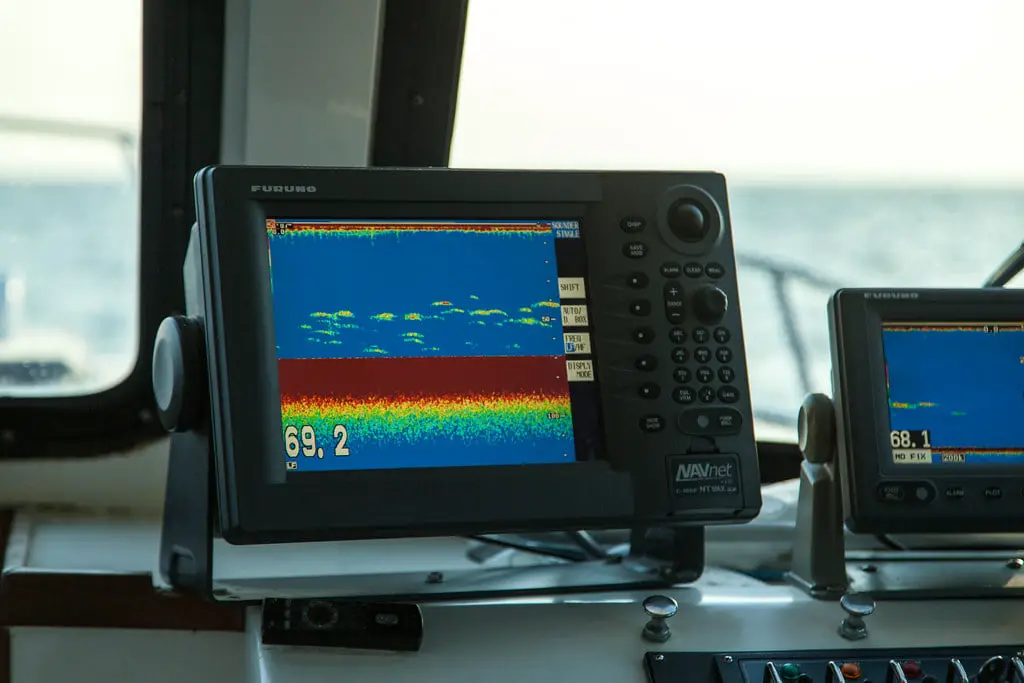
Kayak fishing gives a very precise aggregate of tranquility and adventure, permitting anglers to discover waters that huge boats cannot get proper access to. To improve your kayak fishing leisure, a fish finder is a useful device. This tool makes use of sonar to find out underwater systems, fish, and intensity contours, assisting you in locating top fishing spots with precision.
In this manual, we are going to take you through the step-by-step process of attaching a fish finder to your kayak, ensuring you’re prepared for a successful fishing day adventure.
How to Hook Up a Fish Finder in a Kayak 2024: A Comprehensive Guide
Certainly! Let’s dive into a few unique pointers for hooking up a fish finder on your kayak:
Transducer Placement
1. Inside the Hull (Clean Installation): If you prefer a sleek appearance, mount the transducer in the kayak hull. Use a marine-grade adhesive to stabilize it.
2. Through the Hull (Strong Signal): For better signal electricity, drill a hollow through the hull and epoxy the transducer in place. Ensure a watertight seal.
3. External Mount (Easy Setup): Attach the transducer externally using a clampon mount. This technique is brief and doesn’t require drilling.
Wire Management
1. Keep wires prepared and secure. Use cable ties or clips to save you from tangling.
2. Run the electricity cable from your kayak’s battery. Use a water-resistant connector to shield the relationship.
Display Placement
1. Mount the show where it’s effortlessly seen while paddling and fishing.
2. Consider a RAM mount or a custom bracket for stability.
Power Source
1. Use a 12V battery. Place it in a water-resistant container or bag.
2. Connect the fish finder’s power cable to the battery.
Remember, every kayak setup is specific, so adapt those suggestions to your particular version and possibilities.
Understanding the Basics of a Fish Finder
Before delving into the setup, it is essential to understand how a fish finder works and its key additives:
What is a fishfinder?
A fish finder is a virtual device that uses sonar (sound navigation and ranging) to discover fish underwater. It emits sound waves (sonar signs) that jump off devices below the water’s floor, after which it indicates the records on a display screen. This will help anglers test the intensity of the water, underwater structures, and, most importantly, fish.
Components of a Fish Finder
Transducer: This detail sends and gets the sonar signs and symptoms. It’s usually established on the hull of the kayak and is responsible for translating the sonar signs into visible facts on the display unit.
Display Unit: The display unit indicates the information gathered through the transducer. It generally consists of a show display that offers intensity readings, fish arches, and underwater contours. Modern gadgets can also encompass GPS functionality for navigation.
Power Source: Fishfinders require electricity to operate. Common power properties for kayaks embody small marine batteries, transportable electricity packs, or perhaps kayak-precise battery setups designed for minimal space and weight.
Choosing the Right Fish Finder for Your Kayak
Selecting the perfect fish finder is predicated on numerous factors, which consist of:
Factors to keep in mind
Kayak Size and Space: Choose a compact fishfinder that fits properly within the constrained region of a kayak. Consider where you will mount the show unit and the way in which you can stabilize the transducer.
Fishing Environment: Consider whether or not you often fish in freshwater or saltwater. Some fishfinders are better suited to unique environments because of their sonar frequencies and competencies.
Budget: Determine your budget for a fishfinder setup. While primary fashions can be low-charge, more-superior devices with GPS and, in addition, different features can also come at a higher price.
Recommended Fish Finders
Lowrance Hook 2 Series: Known for their simplicity and readability, these gadgets are famous among kayak anglers for their clean setup and ease of use.
Garmin Striker Series: Offers some fashions with numerous display sizes and talents that consist of integrated GPS for navigation.
Humminbird HELIX Series: Known for their advanced sonar technology and centered imaging talents, those devices are excellent for anglers who want to find approximately underwater structures.
Gathering the critical gadgets and materials
Before you begin putting in your fishfinder, acquire the subsequent tools and substances:
Drill with the appropriate drill bits.
Screws or mounting hardware appropriate for your kayak’s cloth (plastic, fiberglass, and plenty of others.)
Waterproof sealant (marinegrade) to seal holes and shield electric connectionsThe transducer mounting bundle is unique to your fishfinder model.
Electrical connectors, warmth-lower tubing, and electric-powered tape for securing and waterproofing connections
A small marine battery or transportable electric PC is suitable for powering your fishfinder.
A step-by-step guide to putting in a fishfinder in a kayak
Preparing for Installation
Before you start drilling holes or mounting something to your kayak, cautiously plan which matters you may pass. Consider the subsequent:
Transducer Positioning: Choose a hole in the kayak’s hull where you can see below the waterline without being blocked by anything. The transducer needs to be angled 45 degrees and placed parallel to the water’s surface.
Display Unit Mounting: Determine in which you could mount the show unit for maximum visibility and accessibility, even while kayaking. Consider using a RAM mount or a custom mount suitable for your kayak version.
Installing the transducer
The transducer is arguably the most essential issue in your fishfinder setup. Follow the steps to find it collectively nicely:
Positioning: Place the transducer on the kayak hull inside the determined-upon vicinity. Ensure it’s positioned an extended way from interference from paddling or fishing equipment.
Mounting: Use the mounting bundle provided with your fish finder to attach the transducer to the kayak hull. Follow the producer’s commands for mounting and make certain an everyday, healthy.
Securing: Use screws or bolts (relying on your kayak’s cloth) to stabilize the transducer mount. Apply marine-grade sealant at some stage to the screws to prevent water from moving into the kayak through those holes.
Mounting the show unit
Once the transducer is securely installed, cognizance begins putting in the show unit.
Choosing a Mount: Select the ideal mounting opportunity in your display unit. RAM mounts are well-known for their adjustability and stability on kayaks.
Mounting the Unit: Attach the display unit mount to a robust part of the kayak, ensuring it does not interfere with your paddling stroke or precise recreation. Secure it firmly to save you from vibrations or movement.
Wiring and Powering the Fish Finder
Now it is time to connect the electric components.
Routing Cables: Carefully direct the transducer cable and electricity cable from the transducer and show the unit to your chosen battery or power source. Use cable ties to stabilize the cables along the kayak’s inner form, preserving them in a protracted manner far away from areas prone to damage.
Assembling the Transducer Cable: As directed by the manufacturer, attach the transducer cable to the display unit. To guarantee a waterproof connection, use sealant and water-proof, electric-powered connectors.
Power Source Installation: Install your preferred electricity source (e.g., small marine battery, transportable strength) in a strong area on the kayak. Ensure the battery is securely hooked up and guarded from water publicity.
Electrical Safety: Double-take a look at all connections to make sure they’re strong and waterproofed. Use heat-reduced tubing or electric-powered tape to seal connections and prevent corrosion.
Testing and calibrating your fishfinder
Before hitting the water, take an intensive look to make sure the entire machine is functioning effectively.
Power On: Turn on the fish finder and make sure the display unit powers up effectively. Verify that the transducer is sending and receiving sonar symptoms.
Depth Calibration: Calibrate the fish finder’s depth readings in line with your kayak’s waterline and the water depth wherein you will be fishing.
Sonar Settings: Adjust sonar settings, which encompass sensitivity, frequency, and intensity range, primarily based on your fishing surroundings (shallow water, deep water).
Test Run: Conduct a check run in a robust water vicinity to verify the fisherman’s primary overall performance. Look for fish arches, underwater structures, and correct intensity readings.
Maintenance Tips for Your Fish Finder
To maintain your fishfinder in the pinnacle of circumstances, observe those protection guidelines:
Regular Cleaning: Clean the transducer and display unit often to eliminate any debris, salt, or algae buildup that would have an effect on traditional universal performance.
Inspect Connections: Before every day experience, take a look at all electric-powered connections and seals for signs of damage and tear, corrosion, or harm. Repair or update any broken components right away.
Storage: Store your kayak and fish finder in a dry, sturdy location while no longer in use to shield them from exposure from the factors.
Conclusion
Installing a fish finder in your kayak can drastically enhance your fishing leisure by offering precious underwater statistics and helping you discover fish more accurately. By following this complete guide and the manufacturer’s instructions, you can successfully deploy a fishfinder in your kayak and enjoy powerful fishing outings. Explore new fishing spots, navigate with self-perception, and allow your fish finder to guide you to a fulfillment trap!
This special guide offers an entire roadmap for putting in a fishfinder for your kayak, ensuring you’re nicely organized for exciting and successful kayak fishing adventures. If you have any unique questions or want similar assistance, enjoy it to the fullest. Happy fishing!

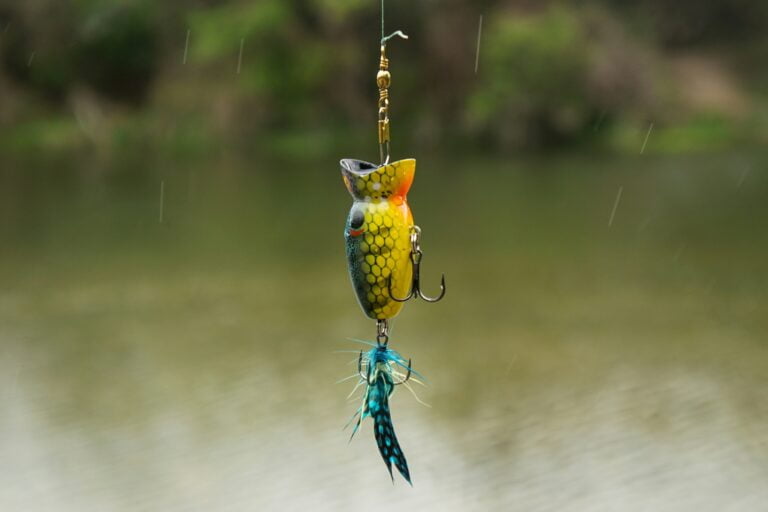
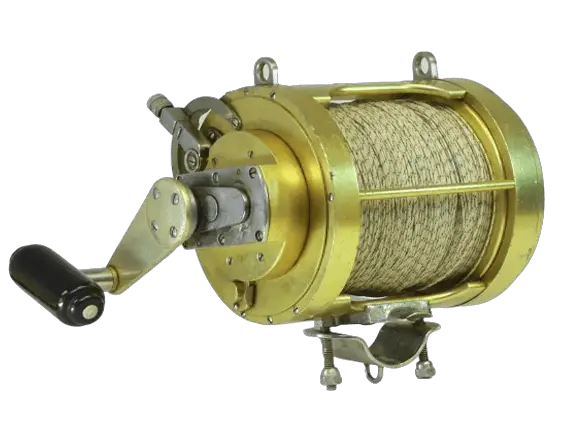
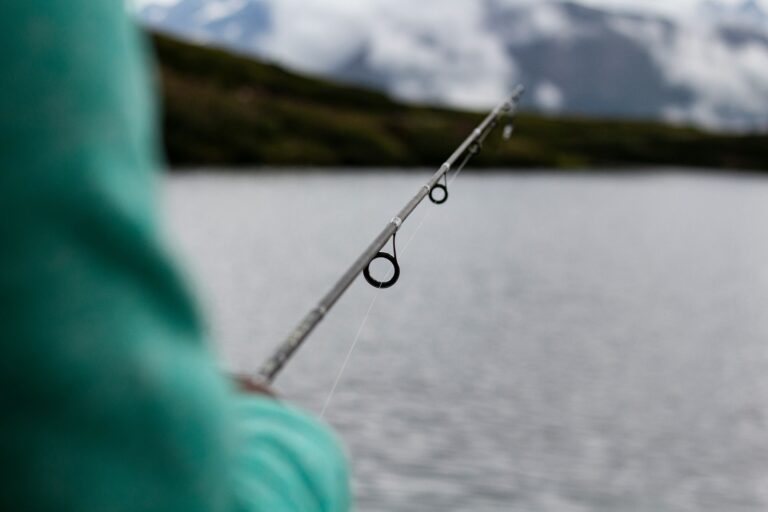
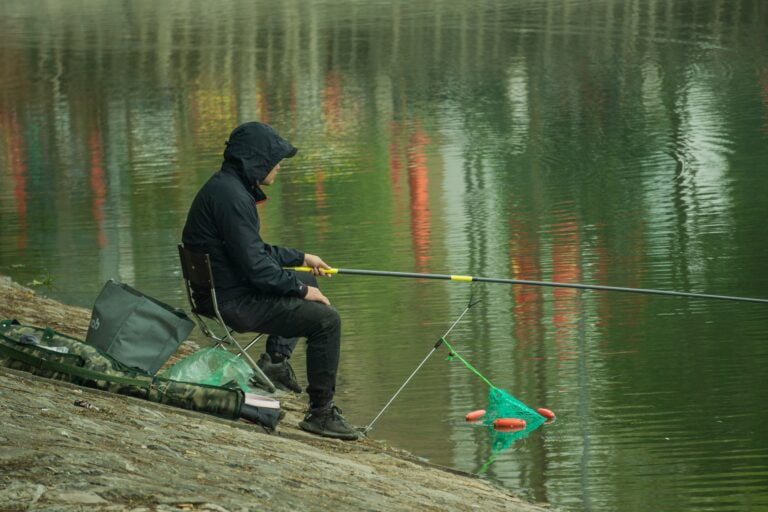
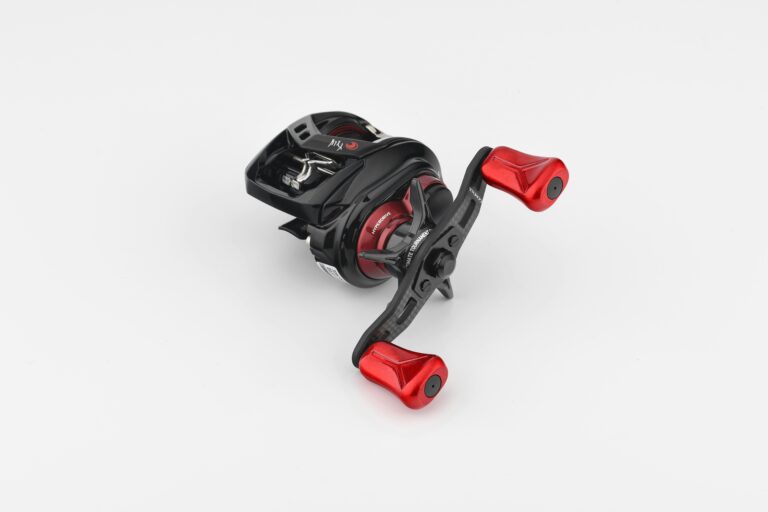
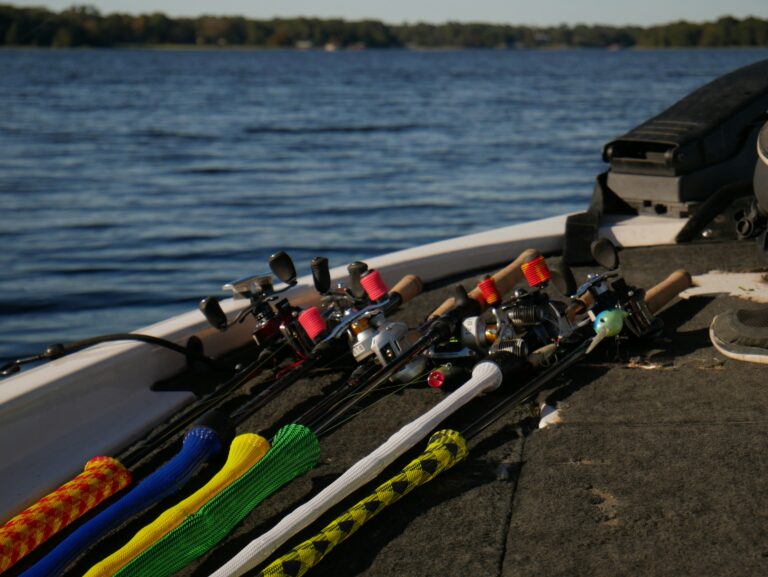
One Comment